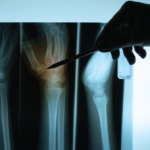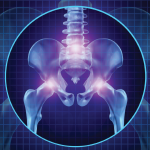NEW YORK (Reuters Health)—Denosumab injection delays of more than four months are associated with an increased risk of fracture compared with on-time injections, especially at the spine, new research indicates. “This study suggests the importance of timely denosumab administration when used for long-term osteoporosis management,” the researchers write in Annals of Internal Medicine.1 “When starting…
Search results for: hip fracture

Bone Density Concerns: Guidance on Tackling Fracture Risk in CKD
Suggestions on how to assess risk and manage bone issues in chronic kidney disease patients are offered…

If It’s Broken, Fix It: Can an Automated System Predict Short-Term Fracture Risk?
A clinician’s ability to determine which patients are at greatest risk for hip or other fracture is improving with the use of algorithm-based fracture risk calculators…

Prevent Osteoporotic Fractures with a Fracture Liaison Service
Imagine leaving the hospital after suffering a heart attack without being treated for hypertension or being started on a beta blocker. What would we think of the hospital where patients are never educated about the relationship between treating hypertension and reducing myocardial infarction and stroke risk? Unfortunately, this happens every day with osteoporosis and fractures…
Osteoporotic Fracture Rates Similar with Denosumab, Alendronate in Real World
NEW YORK (Reuters Health)—Rates of osteoporotic fracture were similar three years after starting either denosumab or alendronate in a real-world Danish population-based cohort study. “Previous studies have shown that denosumab is more efficacious than alendronate in increasing bone mineral density (BMD), possibly the best proxy outcome for subsequent fracture risk. However, previous studies were underpowered…

Insights on the Diagnosis & Treatment of Low Back & Hip Pain
CHICAGO—Two experts presented insights on the diagnosis and treatment of low back and hip pain, including a refresher course on the mechanical structures involved, in Anatomy in a Day: Demystifying Low Back Pain and Lateral Hip Pain: New Patho-Anatomical Perspectives, a session at the 2018 ACR/ARHP Annual Meeting. Low Back Pain Avoid using such terms…
Bone Mineral Density Most Important Determinant of Fracture Risk
NEW YORK (Reuters Health)—In what is believed to be the largest study investigating genetic and clinical determinants of osteoporotic fracture risk, only a genetic predisposition to low bone mineral density (BMD) had a potential causal role to play. “Notably, genetic predisposition to lower levels of vitamin D and estimated calcium intake from dairy sources were…
Hip Bone Deterioration May Differ Significantly Between Men & Women
NEW YORK (Reuters Health)—Various image analysis techniques show sex-specific patterns of bone deterioration at the hip, suggesting that men and women should be assessed differently for hip fracture risk, researchers say. “One major contribution of this work is the integration of data-driven computational anatomy approaches, which showed that proximal femur fragility linked to fracture seems…
Higher Fracture Risk in Patients with Polymyalgia Rheumatica, Giant-Cell Arteritis
NEW YORK (Reuters Health)—Patients with polymyalgia rheumatica (PMR) and giant-cell arteritis (GCA) have similarly increased risks of fracture, compared with the general population, researchers have found. “It is of surprise that patients with GCA have a similar fracture risk to those with PMR,” Dr. Zoe Paskins from Keele University, in Staffordshire, told Reuters Health by…
Changes in Bone Markers Predict Fracture Reduction with Anti-Resorptive Drug
NEW YORK (Reuters Health)—Treatment-related changes in bone formation markers predict vertebral-fracture reduction with anti-resorptive drug therapy, according to a meta-regression analysis of 14 clinical trials. “These results may be useful for the development of new osteoporosis treatments or when considering new populations or dosing regimens with existing treatments,” Dr. Douglas C. Bauer from the University…
- « Previous Page
- 1
- 2
- 3
- 4
- 5
- …
- 27
- Next Page »